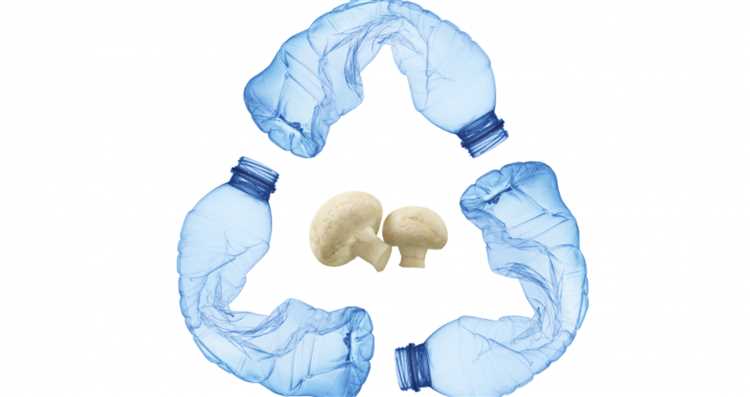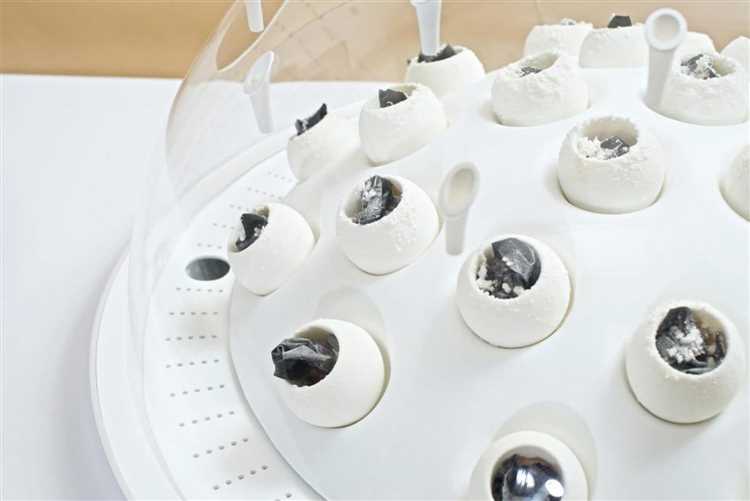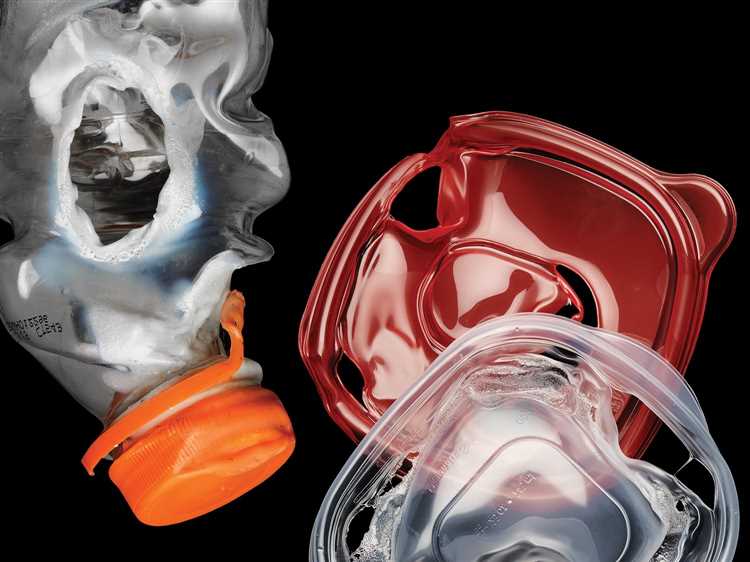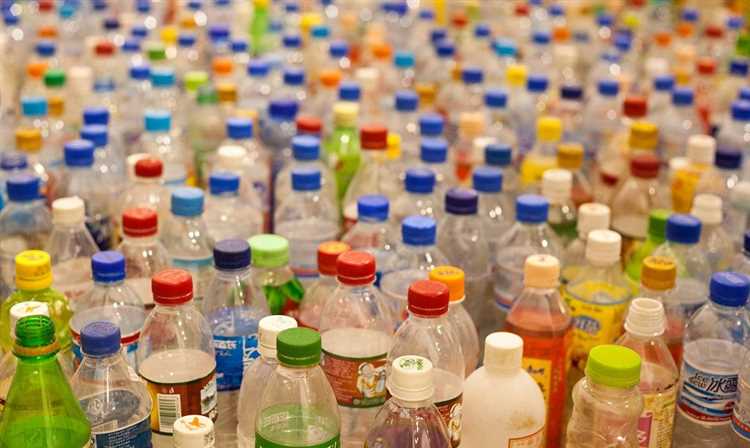
Plastic pollution has become a major environmental concern around the world. Every year, millions of tons of plastic waste end up in our oceans, rivers, and landfills, posing a threat to marine life, wildlife, and ecosystems. Finding solutions to this problem is crucial, and one potential avenue is the discovery of organisms that can digest plastic.
Plastic is a synthetic material that is not naturally biodegradable. It can take hundreds of years for plastic to break down in the environment, which means that it accumulates over time. However, recent research has shown that there are certain organisms with the ability to break down and metabolize plastic, also known as plastic-eating organisms.
One example of a plastic-eating organism is the waxworm, a caterpillar species that can digest polyethylene, one of the most common types of plastic. Scientists have discovered that the waxworm’s gut contains bacteria that can break down the chemical bonds in plastic, allowing the worm to consume and digest it. This finding has raised hopes that further research could lead to the development of enzymes or bacteria that could be used to break down plastic waste on a larger scale.
Another promising discovery comes from the study of plastic-eating bacteria. Certain bacteria have been found to have the ability to produce enzymes called PETases, which can break down polyethylene terephthalate (PET) plastic, commonly used in bottles and packaging. These enzymes have the potential to be used in industrial processes to recycle plastic more efficiently, reducing the need for new plastic production and decreasing plastic pollution.
While the discovery of organisms that can digest plastic is an exciting development, it’s important to note that these organisms alone cannot solve the plastic pollution problem. The most effective solution lies in reducing single-use plastic consumption, improving waste management systems, and promoting recycling. Nevertheless, the research on plastic-eating organisms offers hope for the future, providing scientists with new insights and potential strategies to tackle one of the most pressing environmental challenges of our time.
- The ability of different organisms to break down plastic
- Bacteria
- Fungi
- Bacteria that can degrade plastic
- Fungi as plastic decomposers
- Invertebrates with plastic-digesting capabilities
- Waxworms
- Mealworms
- Role of marine organisms in plastic degradation
- Microbes
- Marine invertebrates
- Potential for harnessing plastic-digesting organisms
- Q&A:
- Are there any organisms that can digest plastic?
- How do organisms digest plastic?
- Which types of plastic can be digested by organisms?
- Can organisms that digest plastic help with plastic waste pollution?
The ability of different organisms to break down plastic
The problem of plastic pollution has spurred scientific research on the ability of various organisms to break down plastic. While plastic is a synthetic material that is not biodegradable in the traditional sense, there are organisms that can degrade plastics through a process known as biodegradation.
Bacteria
Bacteria are one of the most promising organisms when it comes to plastic degradation. Certain bacteria, such as Pseudomonas and Alcanivorax, have been found to produce enzymes that can break down plastic into smaller molecules that can be easily utilized by other organisms.
One example is Pseudomonas putida, a bacterium that has the ability to degrade polyethylene, which is one of the most common types of plastic. Studies have shown that this bacterium produces an enzyme called PETase, which can break down PET (polyethylene terephthalate), a type of plastic commonly used in bottles and packaging.
Fungi

Fungi, such as Aspergillus and Penicillium, have also shown potential in plastic degradation. These fungi produce enzymes that can effectively break down certain types of plastics, including polystyrene and polyurethane.
One example is the fungus Aspergillus tubingensis, which has been found to degrade polyurethane. The enzymes produced by this fungus are capable of breaking down the molecular structure of polyurethane, making it more accessible for further degradation by other organisms.
While bacteria and fungi show promise in plastic degradation, further research is needed to fully understand their capabilities and optimize their use in biodegradation processes. With ongoing research, it is hopeful that these organisms can be utilized to mitigate plastic pollution and contribute to a more sustainable future.
Bacteria that can degrade plastic
Plastic pollution is a global environmental problem, and scientists have been researching various solutions to tackle this issue. One potential solution lies in the natural abilities of certain bacteria to degrade plastic.
Some bacteria have the capability to break down plastic, including polyethylene terephthalate (PET) and polyethylene (PE), which are commonly found in single-use plastics such as bottles and bags. These bacteria produce enzymes called polyesterases or PETases, which can break down the chemical structure of plastic and convert it into simpler compounds.
One well-known example is Ideonella sakaiensis, a bacterium discovered in 2016 that is able to feed on PET. Researchers found that this bacterium secretes an enzyme called PETase, which can break down PET into its building blocks.
In addition to Ideonella sakaiensis, several other bacteria have been discovered with similar plastic-degrading capabilities. For example, Acinetobacter bacteria can degrade various types of plastic, including polypropylene (PP) and polyethylene (PE). Similarly, Pseudomonas aeruginosa and Agromyces bacteria have been found to degrade polyethylene and polypropylene.
Furthermore, studies have shown that environmental conditions can influence the plastic-degrading abilities of bacteria. For instance, researchers found that Burkholderia bacteria were more efficient at breaking down PET when exposed to sunlight.
The discovery of bacteria that can degrade plastic opens up possibilities for using these microorganisms to combat plastic pollution. Researchers are exploring different methods, including bioengineering and genetic modification, to enhance the plastic-degrading abilities of bacteria. This research has the potential to revolutionize waste management practices and contribute to a cleaner and more sustainable future.
Fungi as plastic decomposers

Fungi have recently gained attention as potential decomposers of plastic materials. Certain species of fungi possess the enzymes needed to break down the complex molecular structure of plastic and use it as a source of carbon and energy.
One example of such a species is Aspergillus tubingensis, which has been found to degrade polyurethane, a common type of plastic, in laboratory experiments. This fungus secretes enzymes that break down the bonds between the polymer chains of polyurethane, ultimately converting it into carbon dioxide and biomass.
Another species of fungus, Penicillium bilaiae, has been found to degrade polyethylene, another widely used plastic. This fungus produces an enzyme called cutinase, which is capable of breaking down the ester bonds present in polyethylene and converting it into smaller, more easily digestible fragments.
Research on the use of fungi for plastic decomposition is still in its early stages, and many questions remain. For example, scientists are still working to identify and characterize the enzymes produced by these fungi, as well as to understand the conditions under which they can effectively degrade plastic materials.
Despite these challenges, the potential of fungi as plastic decomposers is promising. Fungi are known for their ability to colonize a wide range of environments and to break down complex organic compounds. Harnessing their natural abilities to digest plastic could be a valuable tool in the fight against plastic pollution.
Invertebrates with plastic-digesting capabilities
In addition to bacteria and fungi, some invertebrates have also been found to possess the ability to digest plastic. These organisms have evolved to produce enzymes that break down plastic, allowing them to extract nutrients from this otherwise indigestible material.
Waxworms

One notable example is the waxworm, the larval stage of the wax moth. Waxworms have been found to be capable of digesting polyethylene, a common type of plastic used in packaging materials. Researchers have discovered that waxworms have certain enzymes in their gut that can break down the chemical bonds in polyethylene, allowing them to metabolize the plastic for energy.
Mealworms
Mealworms, the larval stage of darkling beetles, have also shown plastic-digesting abilities. Studies have shown that mealworms are able to degrade various types of plastics, including polystyrene, which is commonly used in disposable food containers and packaging foam. Mealworms can break down these plastics into smaller molecules that they can then use as a food source.
Both waxworms and mealworms offer potential solutions for plastic waste management. These organisms could be used in industrial processes to biodegrade plastic waste, reducing the impact of plastic pollution on the environment.
Further research is being conducted to explore other invertebrates that may possess plastic-digesting capabilities. Understanding the mechanisms behind their plastic-digestion abilities could potentially lead to the development of more efficient and environmentally friendly methods for plastic waste management.
Role of marine organisms in plastic degradation

Marine organisms play a crucial role in the degradation of plastic in our oceans. These organisms have evolved unique abilities to break down and consume various types of plastic waste, helping to mitigate the growing plastic pollution problem.
Microbes
One key group of marine organisms involved in plastic degradation is microbes. These microscopic organisms, including bacteria and fungi, have the ability to produce enzymes that can break down the molecular bonds in plastic, making it more easily digestible. Through a process known as enzymatic degradation, microbes can break down plastics into smaller, more biodegradable compounds.
Research has shown that certain bacteria, such as Ideonella sakaiensis, have the capability to break down PET (polyethylene terephthalate), a common type of plastic used in beverage bottles. These bacteria produce an enzyme called PETase, which breaks down the strong polymer chains of PET into smaller components that can be further metabolized.
Marine invertebrates
Marine invertebrates, such as worms, mollusks, and crustaceans, also play a role in plastic degradation. Some of these organisms have been found to feed on plastic debris, which can then be broken down and digested in their gastrointestinal tracts.
For example, certain species of marine worms have been observed ingesting microplastics and breaking them down into smaller particles through mechanical digestion. The particles can then be further degraded by microbial activity within the worm’s digestive system.
Additionally, studies have shown that some marine mollusks can consume microplastics and incorporate them into their tissue, effectively reducing plastic pollution in the environment. These organisms have the ability to break down plastic particles through a combination of mechanical and enzymatic processes.
Overall, the role of marine organisms in plastic degradation is critical for maintaining the health of our oceans. By understanding the mechanisms and capabilities of these organisms, researchers can develop more effective strategies to combat plastic pollution and protect marine ecosystems.
Potential for harnessing plastic-digesting organisms
Scientists are increasingly interested in harnessing the potential of organisms that can digest plastic as a way to tackle the global plastic pollution crisis. These organisms offer a promising solution to the problem of plastic waste that is polluting our oceans, landfills, and ecosystems.
Research has identified several types of organisms that have the ability to break down plastics such as polyethylene terephthalate (PET), polypropylene (PP), and polystyrene (PS). These include bacteria, fungi, and even mealworms.
One potential avenue for harnessing plastic-digesting organisms is through the use of bioengineering. By manipulating the genetic makeup of these organisms, scientists can potentially enhance their plastic-degrading abilities and optimize them for industrial-scale applications. This could involve modifying the enzymes produced by these organisms to make them more effective at breaking down specific types of plastic.
Another approach is to explore the microbial communities found in natural environments that have high plastic degradation rates. By studying and understanding the interactions between these organisms, scientists can potentially develop strategies to replicate these conditions in controlled environments. This could lead to the development of specialized bioreactors or other systems that utilize plastic-digesting organisms to efficiently break down plastic waste.
| Type of Organism | Plastic Degraded |
|---|---|
| Bacteria | Polyethylene Terephthalate (PET) |
| Fungi | Polypropylene (PP), Polystyrene (PS) |
| Mealworms | Polystyrene (PS) |
However, there are still many challenges to overcome before harnessing plastic-digesting organisms on a large scale becomes a viable solution. These challenges include scaling up the process, ensuring the safety and efficiency of the organisms, and addressing environmental concerns that may arise from the use of genetically modified organisms. Ongoing research and development are needed to overcome these obstacles and unlock the full potential of plastic-digesting organisms.
Ultimately, harnessing plastic-digesting organisms has the potential to revolutionize the way we deal with plastic waste. By leveraging the natural abilities of these organisms, we can potentially turn plastic waste into a valuable resource and significantly reduce the environmental impact of plastic pollution.
Q&A:
Are there any organisms that can digest plastic?
Yes, there are several organisms that can digest plastic. Some bacteria and fungi have the ability to break down certain types of plastic.
How do organisms digest plastic?
Organisms that can digest plastic produce enzymes that are able to break down the chemical bonds in the plastic. These enzymes allow the organisms to use the plastic as a source of carbon and energy.
Which types of plastic can be digested by organisms?
Different organisms have the ability to digest different types of plastic. Some can break down polyethylene and polypropylene, while others can break down polystyrene.
Can organisms that digest plastic help with plastic waste pollution?
Yes, organisms that can digest plastic have the potential to help with plastic waste pollution. By breaking down plastic, these organisms can help reduce the amount of plastic in the environment and potentially lead to new methods of plastic recycling.